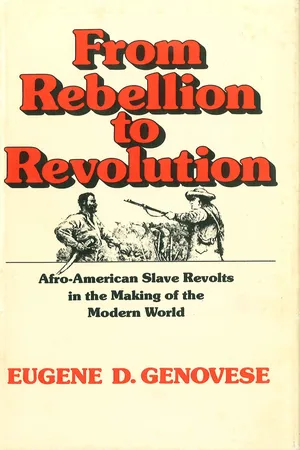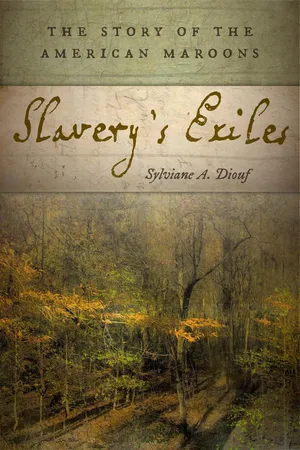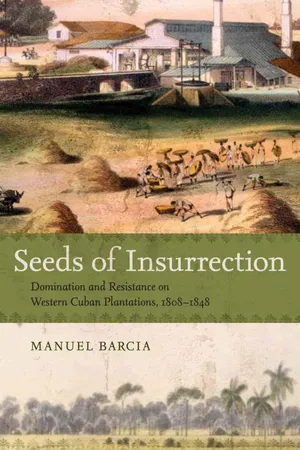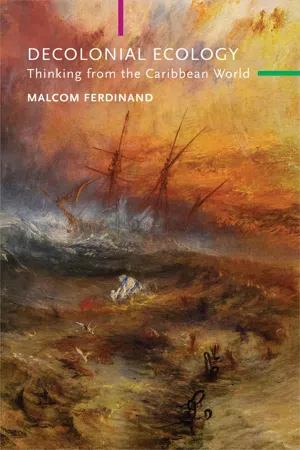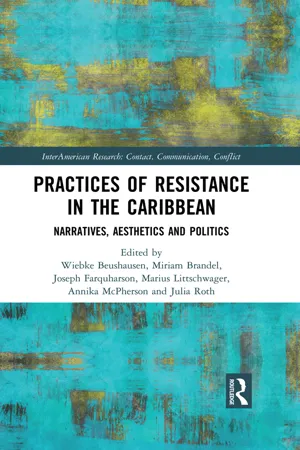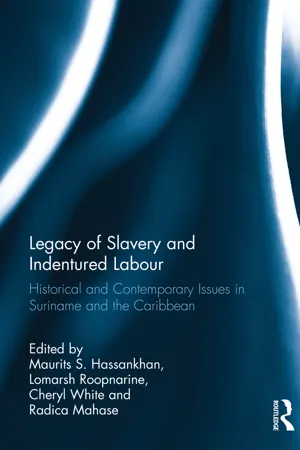History
Maroon Societies
Maroon societies were communities of escaped slaves who formed their own independent settlements in the Americas, particularly in the Caribbean and Latin America. These societies were often located in remote and inaccessible areas, and they played a significant role in resisting and disrupting the institution of slavery. Maroon communities were known for their resilience, resourcefulness, and their ability to maintain their freedom despite the challenges they faced.
Written by Perlego with AI-assistance
Related key terms
7 Key excerpts on "Maroon Societies"
- eBook - ePub
From Rebellion to Revolution
Afro-American Slave Revolts in the Making of the Modern World
- Eugene D. Genovese(Author)
- 1992(Publication Date)
- LSU Press(Publisher)
Most maroon communities did not have an opportunity to come to terms with the colonial regimes. They remained small units of tens or hundreds, sometimes in loose alliance but sometimes culturally and politically hostile to each other. So long as they remained outside the established colonial order they sympathized with the fate of those still enslaved, for their own guerrilla activities required intelligence and supplies from plantation informers and supporters. Everywhere in the hemisphere maroons at particular times and in particular places provoked desertions and slave revolts; they fought and often defeated the troops sent against them. Whatever their relations with the slaves, their success in defeating white military expeditions said more to the plantation slaves about the fighting quality of black people than any abolitionist pamphlet ever could.Although varying greatly in time and place, the maroon redoubts in various countries had some common features. Especially when maroons secured periods of peace by compelling the whites to agree to a modus vivendi, they built agricultural communities that echoed Africa while developing as original Afro-American formations. Typically, the communities relied on horticulture and raised such crops as yams, sweet potatoes, bananas, plantains, squash, and beans, although they might also add cotton, sugarcane, and especially tobacco for their own use. They rarely if ever achieved self-sufficiency in manufactures and had to depend on others for cloth, implements, and, above all, guns.When at peace with the whites and sometimes even when at war, these maroon colonies established trade relations with nearby planters and townspeople. Trade relations with the Europeans and the absorption of occasional white adventurers into the community provided some check to the thoroughgoing Africanization. Yet, on the whole these communities came closest of all New World black communities to recapitulating Africa, notwithstanding their remaining essentially American—i.e - eBook - ePub
Slavery's Exiles
The Story of the American Maroons
- Sylviane A. Diouf(Author)
- 2014(Publication Date)
- NYU Press(Publisher)
3 These criteria, which seem to encompass all maroons, do not. The well-known maroons of Spanish Florida, for example, are absent from these pages because they were officially recognized as free—even if in a limited way—by Spain who offered sanctuary to runaways from the British colonies and later the United States. People who settled among American Indians in their territories are not covered either for the same reason. They lived in villages and towns and not the wilderness, where their hosts openly accepted them and controlled them to various degrees.This book also excludes individuals and communities that some scholars define as maroons, based on a broad definition of marronage as the act of fleeing enslavement. In this vein historian Steven Hahn notes that black enclaves in the North, which attracted new runaways and gave rise to autonomous leadership, social structures, institutions, and cultural practices are “historically specific variants of the broad phenomenon of maroons.”4 But by lumping together divergent experiences, we run the risk of flattening each group’s specificities and of obscuring the maroon experience (as defined here) in favor of better-known forms of resistance. Moreover, this approach hides key differences between maroons and runaways who lived in black enclaves. The latter refused enslavement but not the larger society, which they wanted to be a part of even if they knew it could only be at its periphery. Although they organized to challenge them, runaways and free blacks continued to live under the discriminatory laws of white society, still subservient and controlled.The experience of the people hidden in the wilds—the maroons examined in this book—could not have been more different. Autonomy was at the heart of their project and exile the means to realize it. The need for foolproof concealment, the exploitation of their natural environment, and their stealth raids on farms and plantations were at the very core of their lives. Secrecy and the particular ecology of their refuges forced them to devise specific ways to occupy the land and to hide within it. Negotiating and manipulating their landscape dictated the types of dwellings they could erect, when they could walk outside, or light a fire. They determined if, where, and how much land they could cultivate, what kinds of animals they could keep, how they got weapons and clothes, and what types of interaction they could have with the world they had left behind. - eBook - ePub
Slave No More
Self-Liberation before Abolitionism in the Americas
- Aline Helg, Lara Vergnaud(Authors)
- 2019(Publication Date)
- The University of North Carolina Press(Publisher)
Slaves largely resorted to permanent and prolonged flight to challenge their enslavement and assert their freedom. To get a better sense of that strategy today, it suffices to closely examine the ethnic map of the Americas at the beginning of the twenty-first century: it is characterized by the existence of many communities, and even societies, whose ancestors were groups of Africans who, during the successive waves of the slave trade, escaped and successfully and enduringly settled in the vast frontier zones of the Americas, at times by blending in with uncolonized Amerindians. Located in long inaccessible border regions, those maroon communities established systems of barter and defense through which they were able to survive.The importance of marronage, particularly in the seventeenth century, is evident in the multitude of terms invented to designate it. The words “maroon” and marron come from the Spanish cimarrón , whose semantic evolution clearly shows how colonists viewed enslaved Africans: cimarrón first referred to cattle that had wandered into the mountains of the island of Hispaniola, then a runaway Amerindian slave, and finally a fugitive African slave.6 The numerous terms used to define Maroon Societies and their members attest to their ubiquity: palenques , cumbes , cimarrones , or mambises in Spanish; quilombos, mocambos , ladeiras , magotes , palmares , or coitos in Portuguese; “outlaw camps,” “maroon settlements,” “runaway” or “fugitive” slaves, “hog hunters,” or “mountain negroes” in English; boschneegers (bush negroes) or schuilneegers (hide negroes) in Dutch; and bandes marronnes or nègres marrons in French.7 Of course, many of those fugitive groups did not last long. Climates and living conditions in forests or marshlands were often unsanitary. A large number of runaways survived by looting plantations and villages as well as by robbing major roads, and sometimes they did not resist for long against the well-armed troops sent after them. Those who were captured were executed in a cruelly exemplary fashion or subjected to public whippings before being sold elsewhere. Finally, by hiding in unsettled interior regions, maroon communities unknowingly contributed to the conquest of new frontiers by indirectly serving as scouts for territories that European colonists would subsequently appropriate.Nevertheless, even if marronage was unable to bring an end to slavery anywhere in the Americas, it weakened the institution considerably. As Richard Price writes, “Throughout Afro-America, such [maroon] communities stood out as an heroic challenge to white authority, and as the living proof of the existence of a slave consciousness that refused to be limited by the whites’ conception or manipulation of it.”8 - eBook - ePub
Seeds of Insurrection
Domination and Resistance on Western Cuban Plantations, 1808-1848
- Manuel Barcia(Author)
- 2008(Publication Date)
- LSU Press(Publisher)
Gloria García has shown that maroons constantly went back to the plains for any number of reasons. Maroons often preyed upon their former plantations, as Matthias Röhrig Assunção and Wim Hoogbergen have shown, and they also traded with their comrades who remained enslaved. 7 In some cases, as in the quilombo (runaway slave village) of the Oitizeiro, south of Salvador da Bahia in Brazil, the relationship between maroons and slaves reached the point where maroons were being hired by coiteiro slaves to work their gardens. 8 The complex relations of production in the Oitizeiro defy the traditional scholarly assumption that quilombos—or palenques, as they were called in Cuba—remained totally isolated from the rest of Cuban society. In some cases, maroons not only traded with and visited plantations but also organized celebrations and conspiracies alongside urban slaves, as was the case in 1814 and 1826 in Bahia and between 1843 and 1844 in the hinterland of Matanzas, Cuba. 9 The internal forms of organization of runaway slave communities in the New World and their tactics of defense and attack have been studied in the last few decades. What planters called the “maroon issue” and its categorization have received special attention, as marronage was one of the most distinguishable and regular forms of slave resistance in the New World. Scholarly interest has led to the publication of books and articles assessing marronage in nearly every corner of the continent and even in Africa. The 1973 collection Maroon Societies, edited by Richard Price, is a a seminal international collaboration that explores the history of runaway slaves and their lives. 10 Maroon communities in places as diverse as Brazil, Dutch Guyana, Jamaica, and Cuba are analyzed as examples of how runaway slaves organized their lives in the woods. This study and others stress how slaves had a vast and highly developed geographical knowledge of the areas in which they lived - eBook - ePub
Decolonial Ecology
Thinking from the Caribbean World
- Malcom Ferdinand, Anthony Paul Smith(Authors)
- 2021(Publication Date)
- Polity(Publisher)
6Today, outside the academy, the Maroon is presented as a symbol of political resistance against colonial regimes through the presence of their image in Caribbean literature and through many monuments, and through the names of rivers and roads dedicated to them in the Americas. Statues of Gaspar Yanga in Mexico, the Unknown Maroon in Haiti, the Mulâtresse Solitude in Guadeloupe, Benkos Biohó in Colombia, the Maroni River, and a number of novels attest to the heroic presence of the Maroon.7 However, by approaching this figure solely through the prism of their warring forms of resistance and their political symbols, the nature and land practices that were carried out as a condition for their escape were relegated to the background – despite the many works by anthropologists and historians about these practices.8 The ecological impact of their actions was minimized amidst the necessary work of defending the Maroons’ humanity and courage. The vitality present in the breaking of chains and in mad dashes took precedence over the patience of planted yams and paced-out forests. On the ecological side, the Maroon is conspicuous for their absence. The lack of interest in the histories, anthropologies, and sociologies of slavery within the classical genealogy of environmentalism has resulted in little attention being paid to this figure and their political ecology. Thoreau’s encounter with Maroons in the Walden Woods or John Muir’s encounter with Black people in slave-making Cuba are given little attention. Environmentalism’s solitary walking man has painted in virginal white the same woods that were occupied by Red Amerindians and Maroon communities, concealing the worldly pursuits traced in the landscapes of the so-called wilderness.9 - eBook - ePub
Practices of Resistance in the Caribbean
Narratives, Aesthetics and Politics
- Wiebke Beushausen, Miriam Brandel, Joseph T. Farquharson, Marius Littschwager, Annika McPherson, Julia Roth(Authors)
- 2018(Publication Date)
- Routledge(Publisher)
They incorporate Victor Schoelcher’s historical notions of rebellion and disobedience, hopelessness and resignation, as well as uncontrollability, and affect the post/colonial concepts of historical awareness, desire for self-determination, and modes of construction of collective identity. Instead of reproducing unifying essentialisms of the slave as either servile or rebellious and the maroon as either heroic or criminal, the maroon protagonists in Mahagony, L’Esclave vieil homme et le molosse, and Nègre marron are depicted as ambivalent figures that incorporate many different roles. As a consequence, the maroons cannot be understood as mere literary adaptations of the authors’ theoretical assumptions about the role of marronage in history. On the contrary, the maroon as a historical figure is decontextualized, dehistoricized, but at the same time reindividualized and rehumanized. As a result of this complex rethinking of the historical figure, the past is drawn to the present and the future in order to allow for an integration of metahistorical and metahistoriographic as well as metaliterary discourses into the literary text. In doing so, the authors highlight the constructedness of historical and historiographical discourses about the colonial past and thereby point to the necessity of questioning fixed points of cultural identity - eBook - ePub
Legacy of Slavery and Indentured Labour
Historical and Contemporary Issues in Suriname and the Caribbean
- Maurits S. Hassankhan, Lomarsh Roopnarine, Cheryl White, Radica Mahase(Authors)
- 2016(Publication Date)
- Routledge(Publisher)
In this article, the term self-organization is used. Self-help organizations can be broadly described as organizations established by and for ethnic minorities and migrants. These organizations vary in nature and scope. There is also a distinction between self-help organizations which deal with general social and cultural activities (including sports), religious and political organizations or trade unions and organizations that provide education, training and information to their members. The objectives of self-help organizations are legion but the two main ones are: identity preservation and representation of interests. Some self-help organizations focus on one of these goals, but many of them are involved in both types (de Haas, 1997: 4).Maroons in Suriname
From the very first moment that Africans were brought to Suriname as slaves, they have made successful attempts to escape the slave life and start anew, far away from the colonial centres (van Stipriaan, 2009: 16). During these attempts the slave, individually or in a group, fled the plantations, found each other in the woods, and continued to live together in their own established villages in the hinterland of Suriname. From these new living areas, they attacked the plantations in order to get food and help other slaves to escape (Hoogbergen, 2009: 21). As retaliation, military expeditions were organized against the Maroons but without success (Thoden van Velzen and van Wetering, 2004). After these failed attempts to fight the Maroons, the colonial government decided to make peace with them. The first peace treaty was signed with the Ndyuka Maroons in 1760, followed by the one with Saamaka Maroons in 1762, and with the Matawai Maroons in 1767. These peace treaties (Scholtens, 1994: 36-9; De Groot, 2009: 152-5) gave the Maroons, an autonomous status (Thoden van Velzen and Polime, 1988: 15). This meant that they could reside freely in the hinterland, but they could not visit the coastal areas, where the plantations were located, without permission of the colonial powers. Other provisions in the peace treaties were that the Maroons would receive goods, periodically, from the government, and that they had to transfer runaway slaves to the colonial government (Scholtens, 1992: 36-9). Due to the limitations which were imposed by the peace treaties, Maroons lived in relatively closed communities, enabling them to develop their own government and authority system. This system is characterized mainly by the appointment of leaders for life, through the matrilineal kinship system. According to Oostindie (1997), between 1667 and 1830, about 2,15,000 Africans had been brought to Suriname to work as slaves in the plantations. He further indicates that at the beginning of the eighteenth century, there were 1,000 Maroons and this number had been increased in 1863 up till 8,000. Today, Maroons make up 21.7 per cent of the total Surinamese population (see Table 12.1).
Learn about this page
Index pages curate the most relevant extracts from our library of academic textbooks. They’ve been created using an in-house natural language model (NLM), each adding context and meaning to key research topics.
